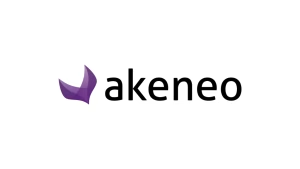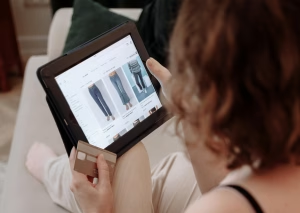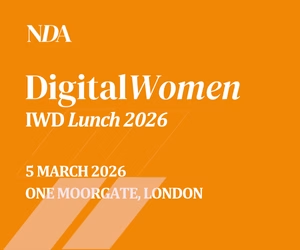The twin challenges of third party tracking cookies being cut and the Coronavirus pandemic has ushered in a new era of innovation in digital advertising, according to programmatic experts.
They say that the necessary innovation already underway as a result of regulations and browser changes that will see third party cookies all but redundant in 12 months time has been supercharged by the effects of COVID-19 on consumer and business behaviour.
New Digital Age brought together seven people working in the field for a round-table on the channel’s future programmatic as part of December’s Programmatic Month on the site.
Amelia Carter, Programmatic Specialist, William Hill; Lara Izlan, Director, Advertising Data & Analytics, ITV; Tanya Field, Co-founder and CPO, Novatiq; Raphael Nataf, product owner of Bcovery; Tim Cronin, VP of Sales, AAX; Emma Jensen, Programmatic Director, Digitas UK and Matt Smith, Programmatic Demand Director, VIOOH debated the issues with NDA editor Justin Pearse.
The pandemic has had a “monumental impact” on out of home in general, says Smith, of programmatic out of home marketplace VIOOH. “ Whilst some brands hit the pause button on their OOH advertising, others turned to the flexibility that programmatic trading offers to fine tune their campaigns to certain environments, audiences or other triggers.
“As a consumer, you still want to be engaged with a particular brand so we saw a lot of brand consideration throughout the pandemic and we still are experiencing that today. With governments changing regulations around the easing or restriction of movement, we started to see different ways that brands and DSPs were activating programmatic OOH as part of a wider digital campaign. For example, a coffee manufacturer that was no longer able to supply independent coffee shops pivoted their strategy to utilise programmatic OOH in the vicinity of those coffee shops and the retail environment to drive awareness and in-store purchase direct to consumers.”
Jensen agrees that brands and agencies have quickly reacted to the particular challenges of the pandemic. “We were doing a lot of consideration planning, making sure that we still had a presence within the brand. Especially for my clients we actually saw an increase in planning for programmatic purely because compared to some of those more traditional channels, we do have the option of turning on and off very quickly. That’s not the norm, but we’re happy at Digitas that that is becoming the norm now.”
Izlan sees three key trends that emerged or accelerated during 2020. “Internally at ITV we saw two years of consumer behaviour change in a matter of six month,” she says, adding that that was true for digitalisation in general and across the industry.
That has led to a need for more flexible media planning, which was “a positive” for programmatic. The third is around pressure on budgets, which she believes will be more intense this year. “All this plus changing regulations and the cookie demise as well.
“The net positive on the industry is it has made us innovate faster and smarter than we have in a long time.”
Cronin believes the key to 2021 and beyond is resilience. “I think resilience is obviously a key word, especially with everything that is happening, not just with COVID but also with cookies going away. So, obviously innovation, resilience. Those are the key words for the industry today,” he says.
For Nataf, a big need is for publishers to do more with what they already have – particularly those ‘lost’ or ‘ghost’ impressions they don’t even know they have. “The trend that we see since this pandemic basically is the drop of CPMs. But most importantly a new way of thinking from publishers about focusing on their existing inventory, rather than wanting to create new impressions based on new single pages or new formats on the page.
“Publishers want a new way to approach monetization. We tackle ghost impressions, which most publishers are not even aware of. The lost impressions they don’t even know that they’re missing. The ecosystem is evolving a lot.”
Less obvious are the solutions that will win out in a post-cookie world. Field’s company is focused on first party data so the “demise of the third party cookie is positive for us, whereas it’s not necessarily positive for everyone in the ecosystem”.
She continues: “What’s marked is that most of the industry players that we are speaking to are having to make fundamental changes to the way that their programmatic systems operate. That’s quite a huge thing for people to have to do.”
Field believes there will be no one single winner, with a number of different solutions able to recognise that a user is uniform on a cross platform basis.
Carter also believes that there won’t be a one-size fits all approach “because everyone has a different take on a unified solution”. The changes to cookies will have a “massive impact” for William Hill, around the way data flows into its DMP and how it creates audiences.
Izlan believes competition between different ID solutions will be good for the industry in order to create something fit for purpose, rather than cookies that were never designed with advertising in mind. “Pinning all our hopes on one single solution to this idea of a universal ID is not helpful. It’s too risky because regulation is still evolving, we still haven’t completely sorted out the value exchange between brands and consumers, media owners and consumers.”
Her hope is for flexible solutions that prioritise connectivity and collaboration between first party data ecosystems, something that technology now allows for in privacy-compliant ways.
For everyone, first party data will help set a new standard in advertising over the blackboxes, with the demise of the cookie effectively removing low price, low quality options. “Even though the industry has known this for years, because we had been so focused on reach and price that has been really hard to resist,” adds Izlan.
Cronin is even more fervent. “The impact of the black box is that there’s too many middlemen so as the industry evolves reducing the number of middlemen is going to be key,” he says. “[There will be] more transparency and then on the other side of it user consent. Regardless of what happens in the future we must ensure that the user always maintains a level of control.”
He is particularly agitated about what he calls the Trump effect in digital media.
“Not to get political but the attacks on referring to media as fake news, and the importance of independent journalism are a big issue. Advertising funds it. With everything that’s happening what’s going on we have to absolutely find a way to make sure that we continue to maintain independence in journalism.”
All agree that programmatic’s successful future will be as much a brand play as it will be the long tail. It is why emerging channels such as Connected TV, audio and even voice activation will grow strongly – as long as the right metrics, checks and balances are in place, something we explore in the final part of this series.
Cronin concludes: “With cookies going away, now is a good opportunity to rethink.”










